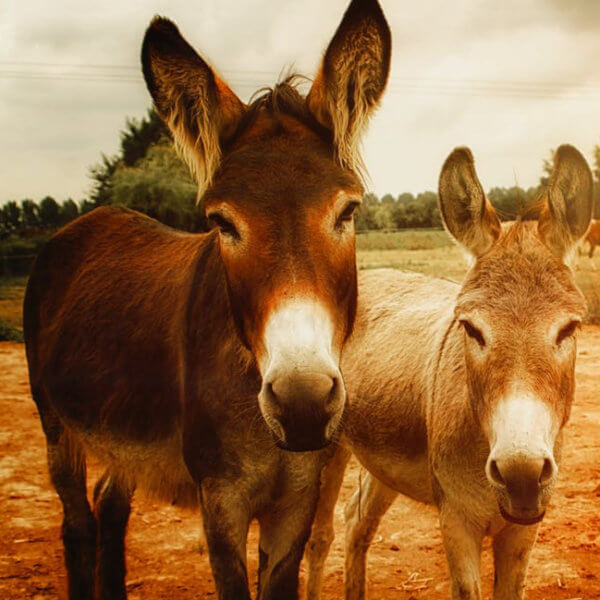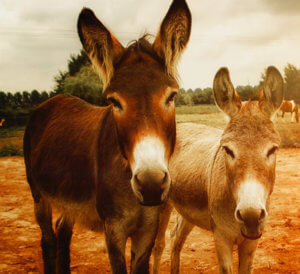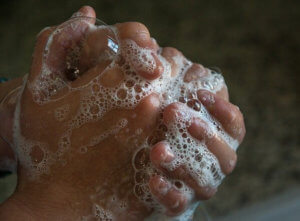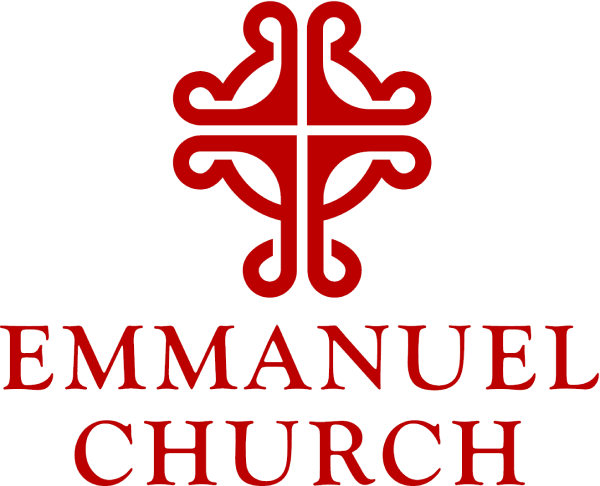
We began this Lenten season without suspecting our lives would change so much before we even got to Holy Week. There are ways that our experience this Lent feels more real — more authentic — to Jesus’ 40 days and 40 nights in the desert — than any in my prior experience. This is a Lent when the regular busy-ness of the world — of work, of school, of any of our projects, or sports, or entertainments — has been put on hold.
Wilderness
Our wilderness doesn’t look like the Judean wilderness where Jesus prepared for his earthly ministry after his baptism, but we are absolutely bewildered. The path ahead of us is unclear. In this time of closures and stay-at-home orders unfolding on a day-by-day, hour-by-hour basis, we don’t have a specific date for when we’ll be back in the church, or when the schools will open again, or when we’ll go back to our lives — or even to the grocery store. And as we listen to the news, hear the daily updates and press conferences, and Town Hall Zoom meetings — all trying to tie down the details and make sense of this, it feels like we’re out of control.
We are on the coronavirus’s schedule, and it’s not a schedule we get to predict, or vote on, or put on our calendars so we can count the days until we can go back to the world as we know it. On this Palm Sunday, we can’t gather in the church, and we can’t even bless and distribute all our beautiful palms. This is really hard. Some of our deepest, tenderest feelings about church are around our childhood memories of the palms — which kind we liked, whether we made crosses from them to peek out of our pockets, or whether we liked them long — or maybe how a beloved parent or grandparent treasured one all year after Palm Sunday, tucking it into a special place over a bedroom mirror. So what do we do with all this?
What Would Jesus Do?
Let’s ask a basic question here. What would Jesus do? In fact — what DID Jesus do? This is a great day in the liturgical year of the church to ask just that question. It’s Passion Sunday, when we read the passage from Matthew that lays out the deep horror of Holy Week — the Last Supper, Judas’s betrayal, Peter’s denial, and Jesus’ arrest, torture, trial, crucifixion, death, and burial — all in our steady path toward Easter morning, and Jesus’ resurrection. We’ve known Passion Sunday as Palm Sunday in the Episcopal Church during our lifetimes. We read the passion narrative to set the stage for Holy Week, but we’re really focused on Jesus’ march into Jerusalem for all of the events of Holy Week.
 As I mourn the things we can’t do this Palm Sunday, it helps me first to remember that palms are a recent addition to Passion Sunday. Our English translation of the passage from Matthew in the Liturgy of the Palms refers to “branches from trees.” In Jesus’ time palm trees were plentiful in Jericho, down in the Jordan Valley, and along the coast near Jaffa, Caesarea Maritima, and Akko, but wouldn’t flower or fruit in the higher elevations. So they are not as likely to be common in the higher elevations — like Jerusalem or Bethphage. John’s gospel does mention palm branches specifically, but many scholars believe that John wrote in Asia Minor — modern Turkey, with a different climate and different trees. The “leafy branches” mentioned in Matthew’s gospel could very well have been olive branches, which were and are still common in that area. For our Palm Sunday celebration today, whatever branches you have in your yard — leafy, budding, or still bare — are just perfect to join the procession behind Jesus.
As I mourn the things we can’t do this Palm Sunday, it helps me first to remember that palms are a recent addition to Passion Sunday. Our English translation of the passage from Matthew in the Liturgy of the Palms refers to “branches from trees.” In Jesus’ time palm trees were plentiful in Jericho, down in the Jordan Valley, and along the coast near Jaffa, Caesarea Maritima, and Akko, but wouldn’t flower or fruit in the higher elevations. So they are not as likely to be common in the higher elevations — like Jerusalem or Bethphage. John’s gospel does mention palm branches specifically, but many scholars believe that John wrote in Asia Minor — modern Turkey, with a different climate and different trees. The “leafy branches” mentioned in Matthew’s gospel could very well have been olive branches, which were and are still common in that area. For our Palm Sunday celebration today, whatever branches you have in your yard — leafy, budding, or still bare — are just perfect to join the procession behind Jesus.
Contrasts
On Passion Sunday, we remember Jesus’ ride into Jerusalem from the little village of Bethphage up on the Mount of Olives. It’s all about contrasts. It was the time of the Passover, and both Jesus and the Roman governor were riding into Jerusalem. Jesus was entering Jerusalem from the Eastern side — probably through the ancient Golden Gate. It’s not really very far from the little village of Bethphage. It takes about 30-40 minutes — tops — to walk down to the Garden of Gethsemane, and then maybe another 30 or so to cross the Kidron Valley and walk back up Mount Moriah to Jerusalem.
At the same time the Roman governor was riding into Jerusalem from the Western side, probably from Caesarea Maritima, on the Mediterranean coast, an important commercial and military center — and about a two days’ ride from Jerusalem. So Jesus is riding into Jerusalem from one side, the Roman governor from the other. These were two very different processions.
 The Roman governor was on a long journey from an important city on the coast — with horses, weapons, and soldiers — as Jesus plans his march down from the humble little village of Bethphage. Think of how the Roman procession would have looked and sounded. The ancient Roman roads into Jerusalem’s Old City are all white limestone, and the horses’ hooves would have struck that stone as sharply as the sunlight glanced off the stone and the soldiers’ swords. I think of T. S. Eliot’s poem The Triumphal March —
The Roman governor was on a long journey from an important city on the coast — with horses, weapons, and soldiers — as Jesus plans his march down from the humble little village of Bethphage. Think of how the Roman procession would have looked and sounded. The ancient Roman roads into Jerusalem’s Old City are all white limestone, and the horses’ hooves would have struck that stone as sharply as the sunlight glanced off the stone and the soldiers’ swords. I think of T. S. Eliot’s poem The Triumphal March —
Stone, bronze, stone, steel, stone, oak leaves, horses’ heels
Over the paving.
And the flags. And the trumpets. And so many eagles.
How many? Count them. And such a press of people.
We hardly knew ourselves that day, or knew the City.
This is the way to the temple, and we so many crowding the way.
But Jesus doesn’t have soldiers, or horses, steel swords, or an army. Instead, he’s arranged to borrow a donkey and her colt — a mother and her dependent, still nursing baby. The Church of Bethphage shelters a large rock behind a wrought-iron fence in the nave that the Crusaders remembered as the mounting block Jesus used to mount the donkey. That rock has definitely been made holy by the prayers of millions of pilgrims over the past millennium. But it’s really unlikely really to be the mounting block Jesus used, mostly because the rock itself is about 4 1/2 feet high. Jesus would have had to climb down from the rock onto Mama donkey from that height!
It’s all about the contrasts. Instead of a tall, elegant horse, Jesus had a donkey. Instead of fancy military saddles, the disciples put their cloaks over the back of the Mama donkey. Their cloaks were probably worn and dusty from traveling. The crowd threw more cloaks down in the road as Jesus passed, and cut branches from the trees and spread them on the road. Jesus’ parade was very different from the mighty military parade coming in from the coast.
God’s Glory is Revealed in the Simplest Things
God’s glory is revealed in the simplest things. Not in legions of soldiers, with the finest horses and best weapons from an influential city, but in the simple things that we can do — and do together.
Presiding Bishop Michael Curry preached in the National Cathedral’s first live-streamed service during this COVID19 lockdown. We were just learning about viral transmission, and hand washing, and physical distance. Bishop Curry said, Sometimes the most profound and important things come in the simplest of packages — not simplistic, not necessarily easy to do — but simple. Bishop Curry said that even though he’d started washing his hands with soap and water more frequently — and thoroughly — than he used to, part of him was still skeptical that something as simple as soap and water — washing our hands just like our mothers taught us to do— could really help all that much.
 It surprised me too! I thought surely something much more modern and specialized than hand washing — I don’t know, some unavailable medical grade hand sanitizer or some special ultra-violet light device we order on Amazon — must be better. But no. Hand washing with soap really helps.
It surprised me too! I thought surely something much more modern and specialized than hand washing — I don’t know, some unavailable medical grade hand sanitizer or some special ultra-violet light device we order on Amazon — must be better. But no. Hand washing with soap really helps.
So what do we do, as we feel anxious, out of control, and on stay-at-home orders, all on the virus’s schedule and not our own? What would Jesus do? What DID Jesus do, as he processed into Jerusalem with his simple, against-all-odds parade, on the back of Mama Donkey, saddled with the dusty cloaks of his disciples, to conquer nothing less than death and sin?
There’s nothing fancy or sophisticated about this. We do the simplest things — together, while keeping our physical distance to protect us all. We check in with each other. We stay home, and use Zoom, FaceTime or Google Hangout for meetings, birthday parties, and even bedside vigils. We wash our hands — with soap and hot water — for twenty seconds. Sing the doxology while you do it, or the Magnificat, Mary’s song. Mother Mary is surely someone who understood the ancient maternal wisdom of soap and water.
We bake bread. We plant a vegetable garden. We share what we have. We make masks for ourselves — and for our neighbors — to wear when we go out for groceries. The masks don’t need to be made of special cloth or by machine — make them with a clean, folded dish towel, a large napkin, or a bandana — a piece of paper towel, and a couple of rubber bands. Just keep it simple. I’ll show you how during our Family Meeting. These are anxious times. Let’s keep them simple. Let’s choose life, follow what Jesus did, and join the simple, certain, against-all-odds procession toward Easter. Amen
